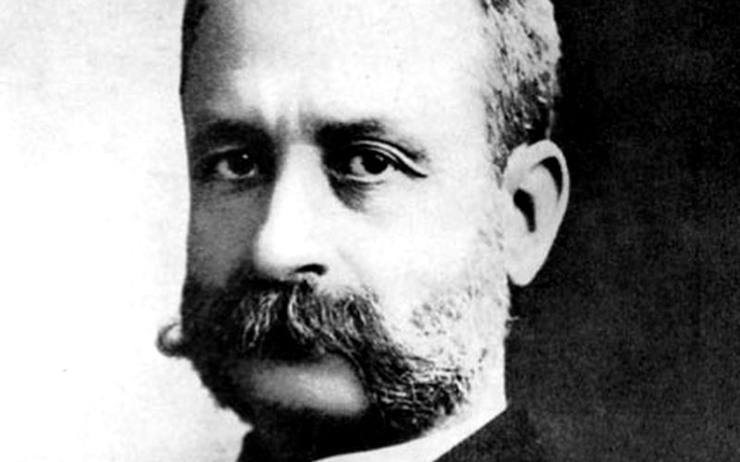Rafael Guastavino. If the name of this Valencian architect may mean nothing to you, it is still engraved on the walls of many buildings. However, he had to cross the Atlantic to find success and recognition. This is the story of a Valencian whose destiny is forever linked to that of the “Big Apple”.
From Valencia to New York
His life could have been drawn from the imagination of the greatest screenwriters. Rafael Guastavino was born in 1842 in the capital of the Valencian Community. At that time, the city did not have the international influence we know today. However, Valencia will play a key role in young Rafael’s apprenticeship, influenced by the city’s architectural wealth. During his teens, he began working as an apprentice in a local architectural firm, before training at the school for master builders in Barcelona.
In 1881 he set foot in New York, leaving his first buildings: the Batlló textile factory in Barcelona and the La Massa Theater, in Vilassar de Dalt. But the American Dream will not start as planned. Guastavino escapes from Barcelona after arranging a fraud to pay for his trip to the United States. He arrives in New York at the age of 39, with the $ 40,000 scam in his pocket and without saying a word of English. He brings with him his campaign Paulina Roig and three children, a boy and two girls. His beginnings in the American city are chaotic. In 1884 it was ruined during the recession. The turning point will come from a technique imported directly from Spain: the Catalan vault. It is the beginning of a new life, the one that will give meaning to the rest of his life and that will be a professional milestone.
The key to success: the Catalan vault
The Catalan vault is made up of several layers of bricks joined transversely, the side of the bricks, so that the longest part is visible. The result appears to defy gravity. Indeed, the Catalan vaults are very subtle. However, they can support much heavier loads. This technique allows for larger structures and softer curves. This system has the main advantage of being incombustible. In an America still affected by the Chicago fire of 1871, this technique was successful. Rafael Guastavino filed the patent in 1885 and created the Guastavino Fireproof Construction Company, which specializes in building vaults.
The one that the New York Times will call on his death “the architect of New York” is at the origin of many buildings still visible today: the Grand Central Terminal, the Ellis Island Grand Hall, the American Museum of natural history, the Saint-Bartholomé church or the town hall. In Washington, Rafael Guastavino made his mark on the National Museum of Natural History and the United States Supreme Court. Just that !

posthumous recognition
By the time he died in 1908, the Valencian had already built nearly 360 buildings in New York, around 100 in Boston and many more in Baltimore, Washington DC or Philadelphia, all of which were equipped with his own fire retardant vaults system. On the death of his father, Rafael Guastavino Expósito Junior, who arrived in New York at the age of 9, took over the reins of the company. The Guastavino company will close its doors in 1962 after 73 years of existence and more than a thousand projects in the United States.
The recognition of its importance in American architecture came very late (its first mentions in architectural books only date back to the 1970s).
But in Valencia, the recognition is quite different. Many inhabitants don’t even seem to know that the city saw the birth of this great architect. Since July 2022 the Valence municipality has decided to remedy this. A statue of the architect now stands in the Plaza de la Reina, right next to his birthplace. Hat in hand, the architect seems to draw a Catalan vault, like an imperishable signature that reminds the Valencians that one of them has shaped a world of bricks in the colors of the American dream.


